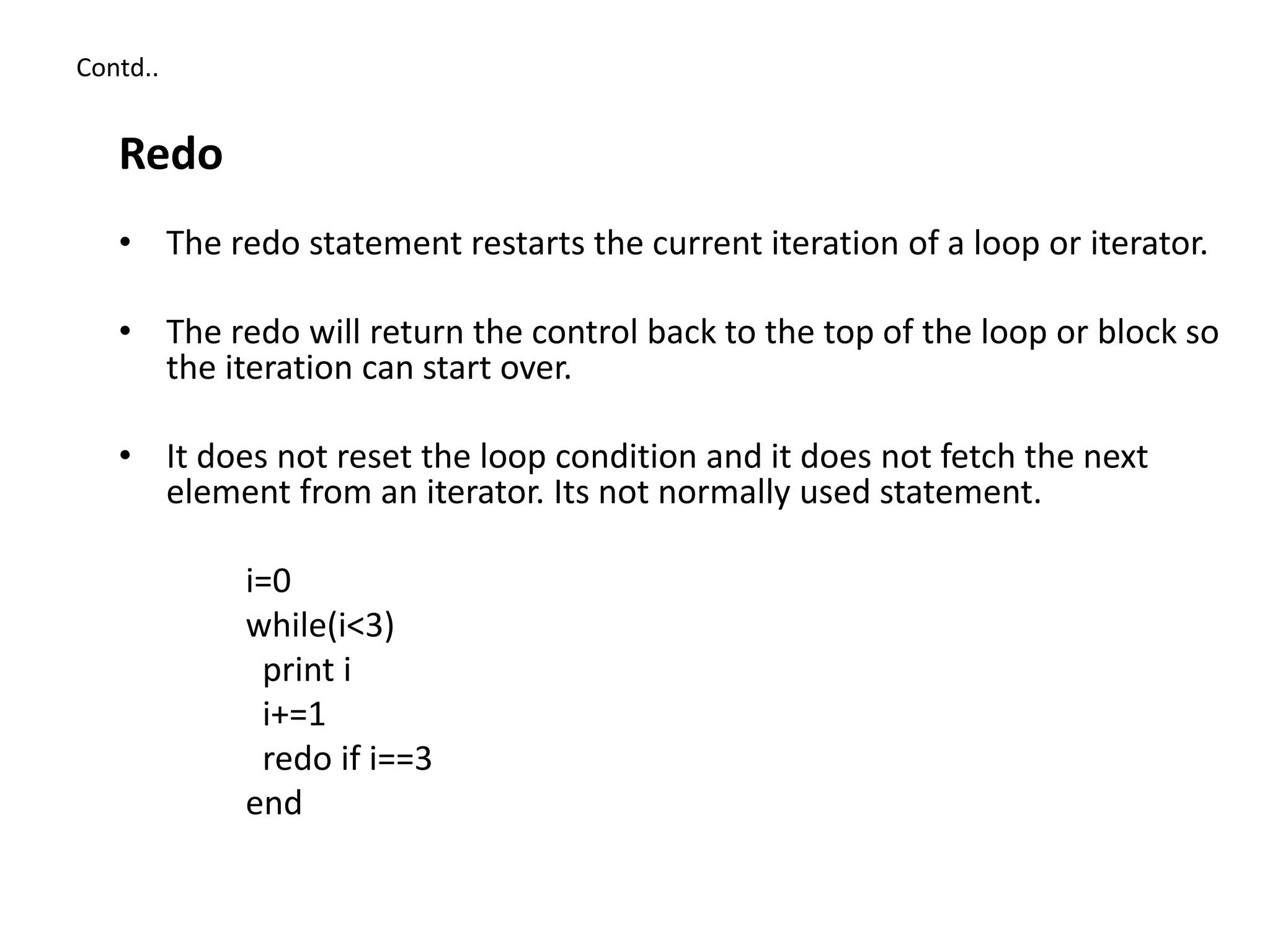This document provides an overview of control structures and flow altering statements in Ruby. It discusses conditionals like if/else, unless, case; loops like while, until, for/in; iterators and enumerable objects; and flow altering statements like return, break, next, redo. Conditionals and loops allow altering the sequential execution of code. Iterators and enumerables provide concise ways to iterate over objects. Statements like return and break change the normal flow of control.
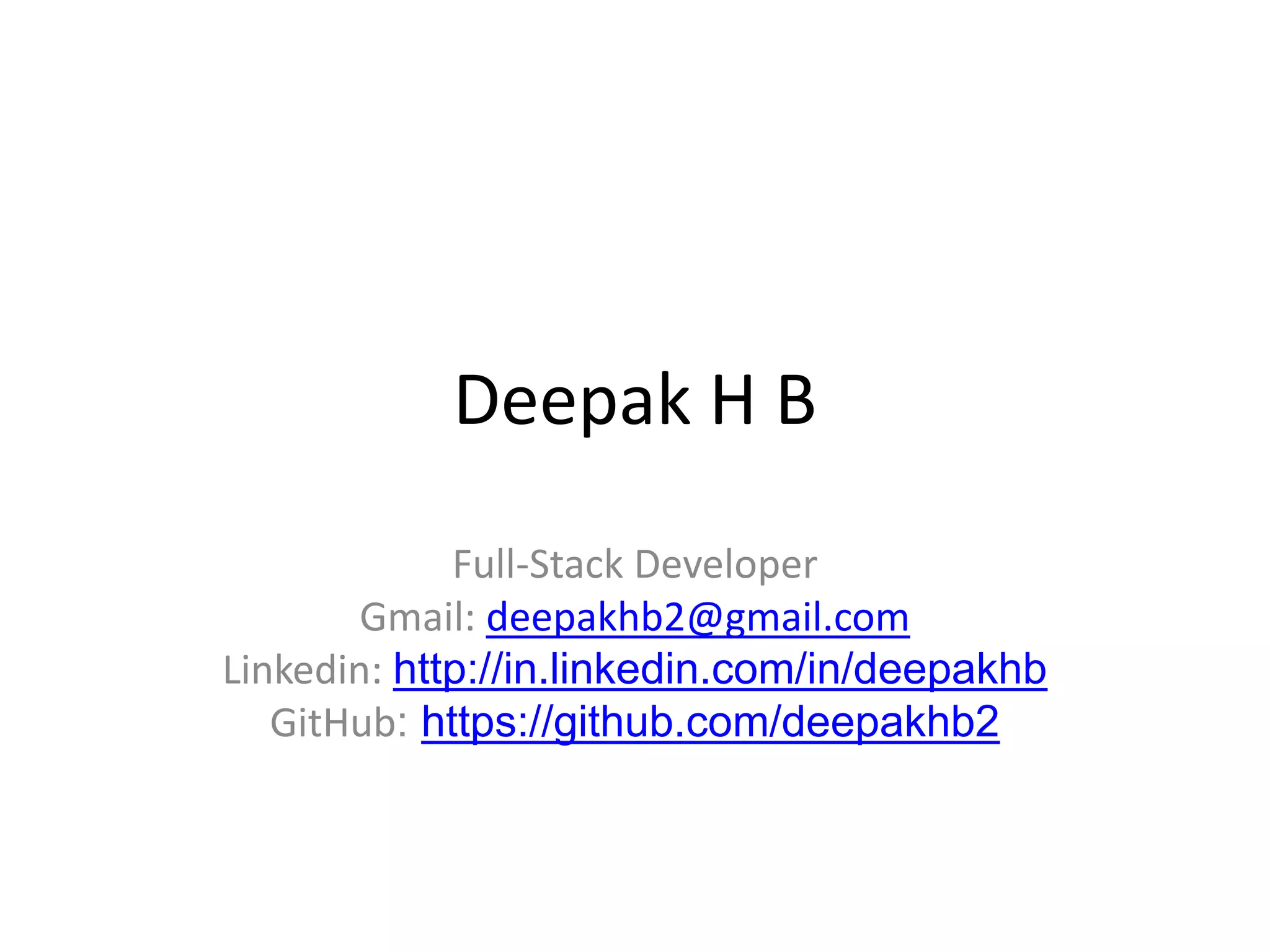
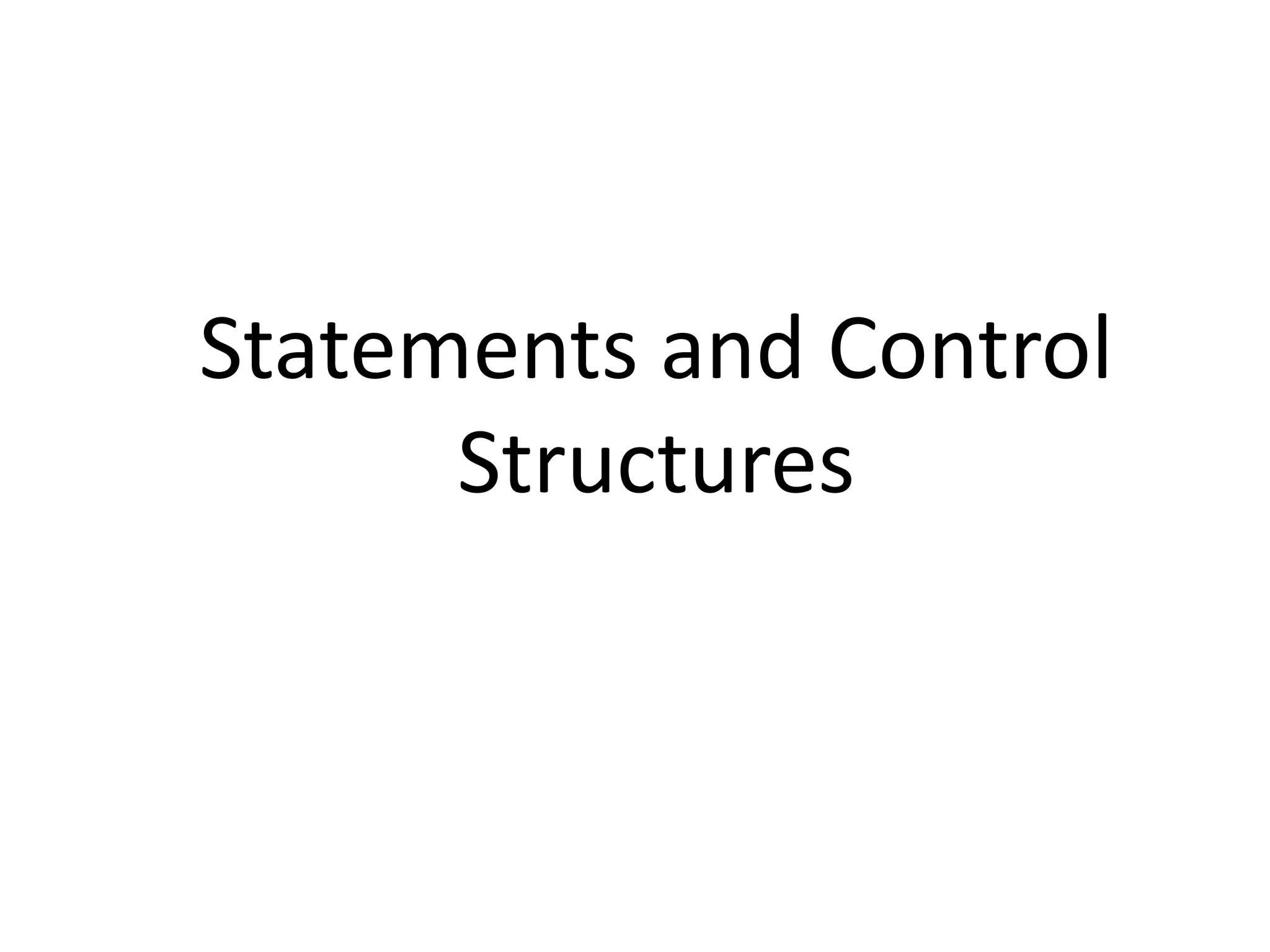
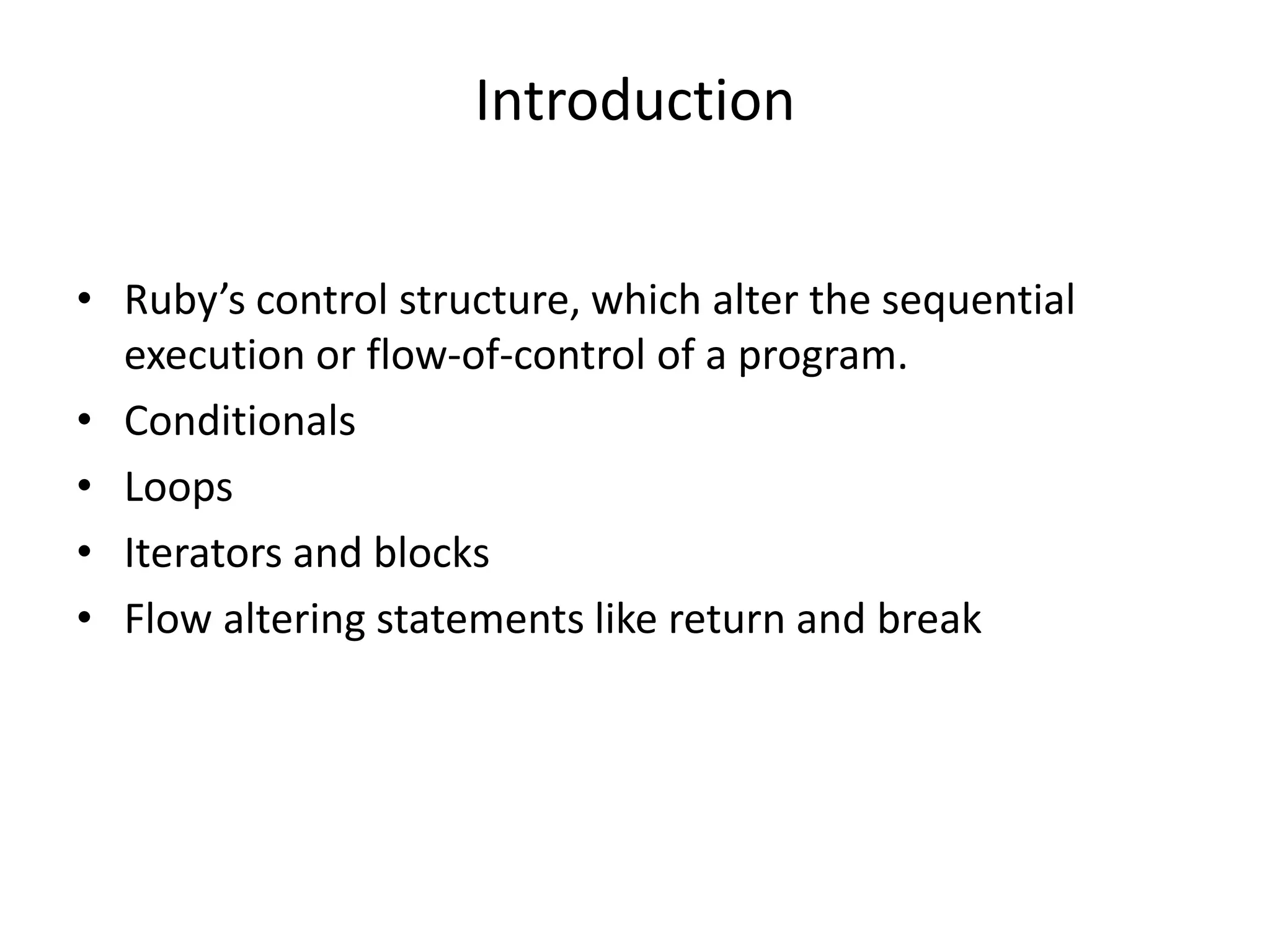
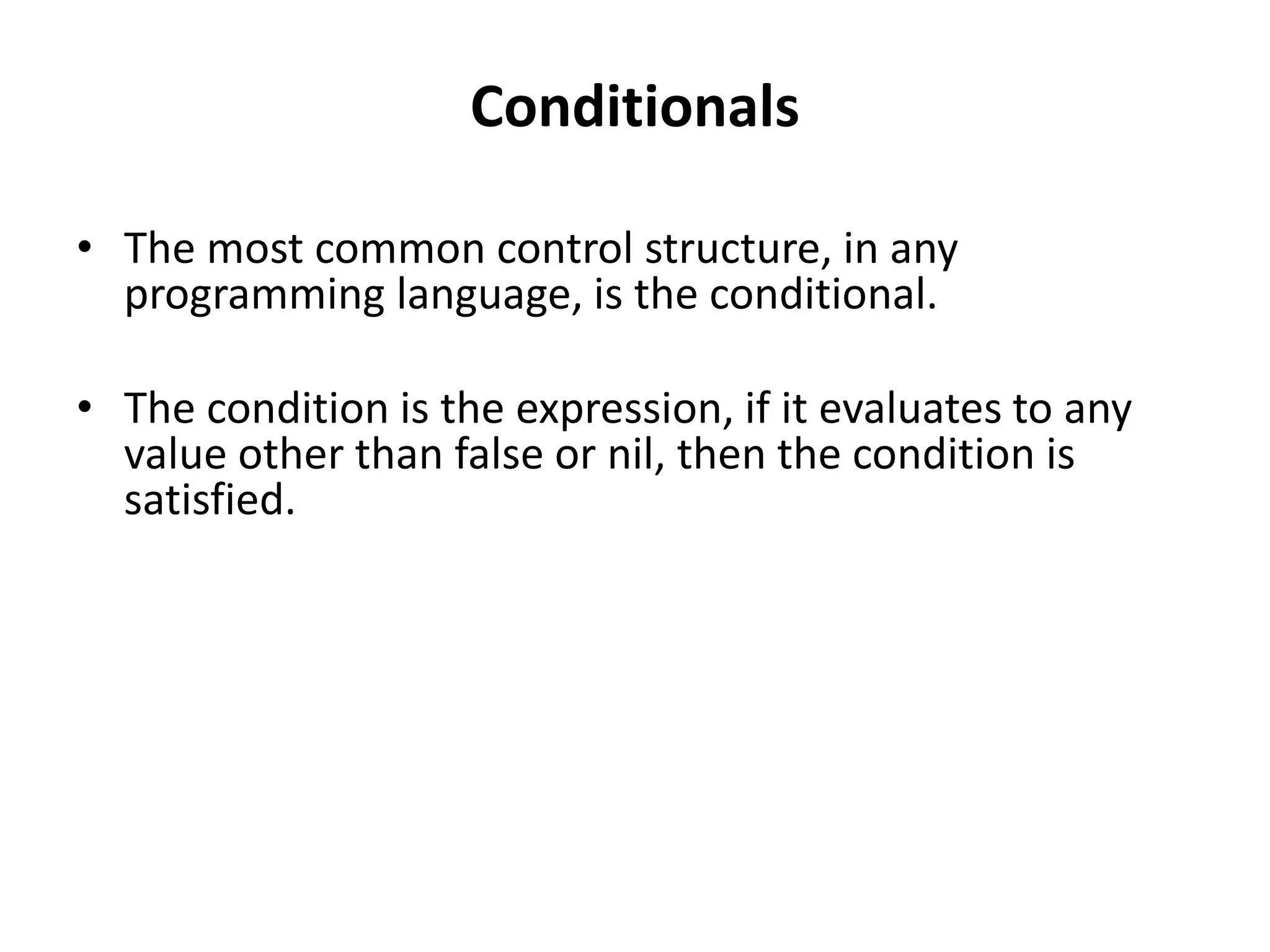
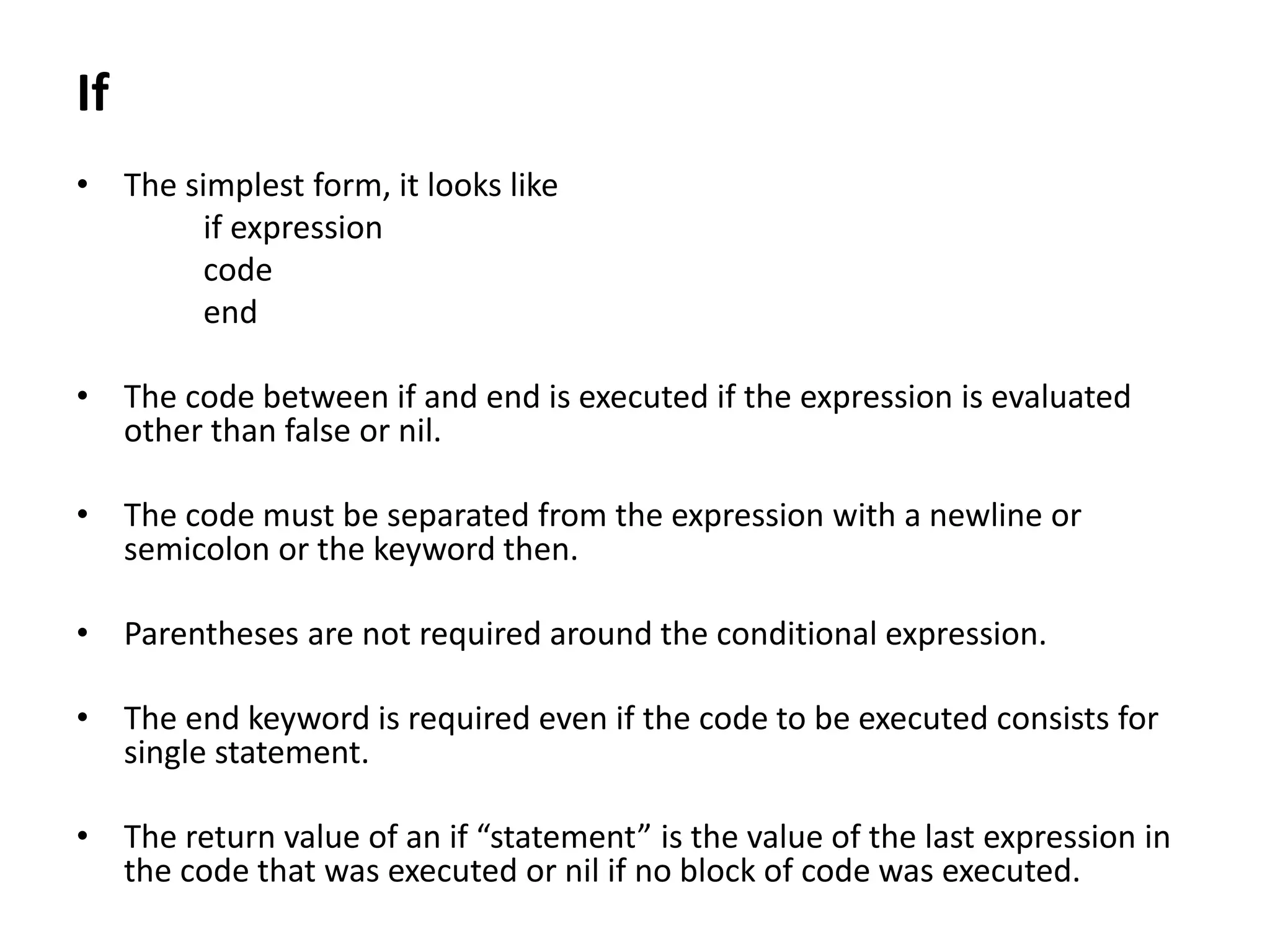
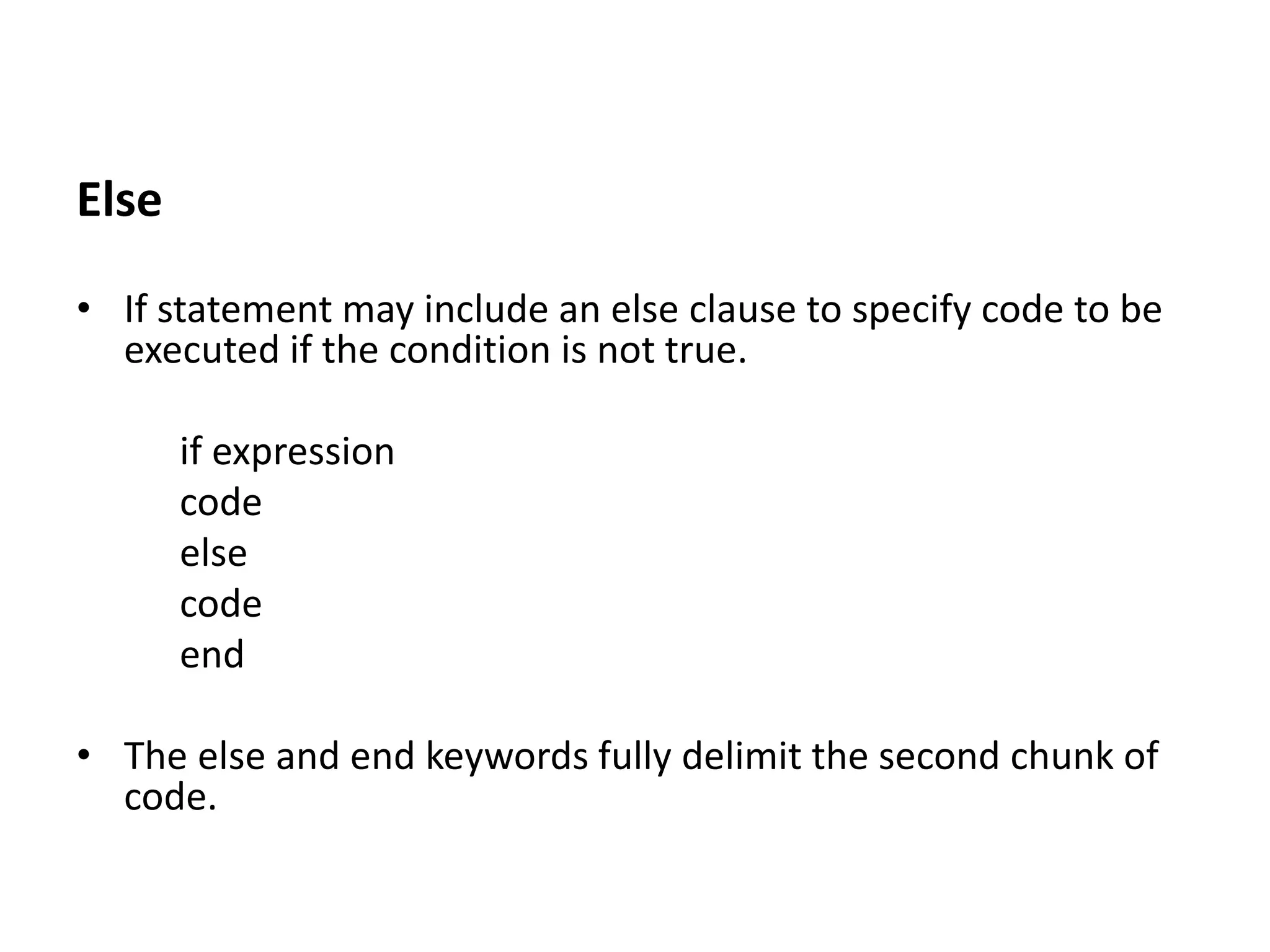
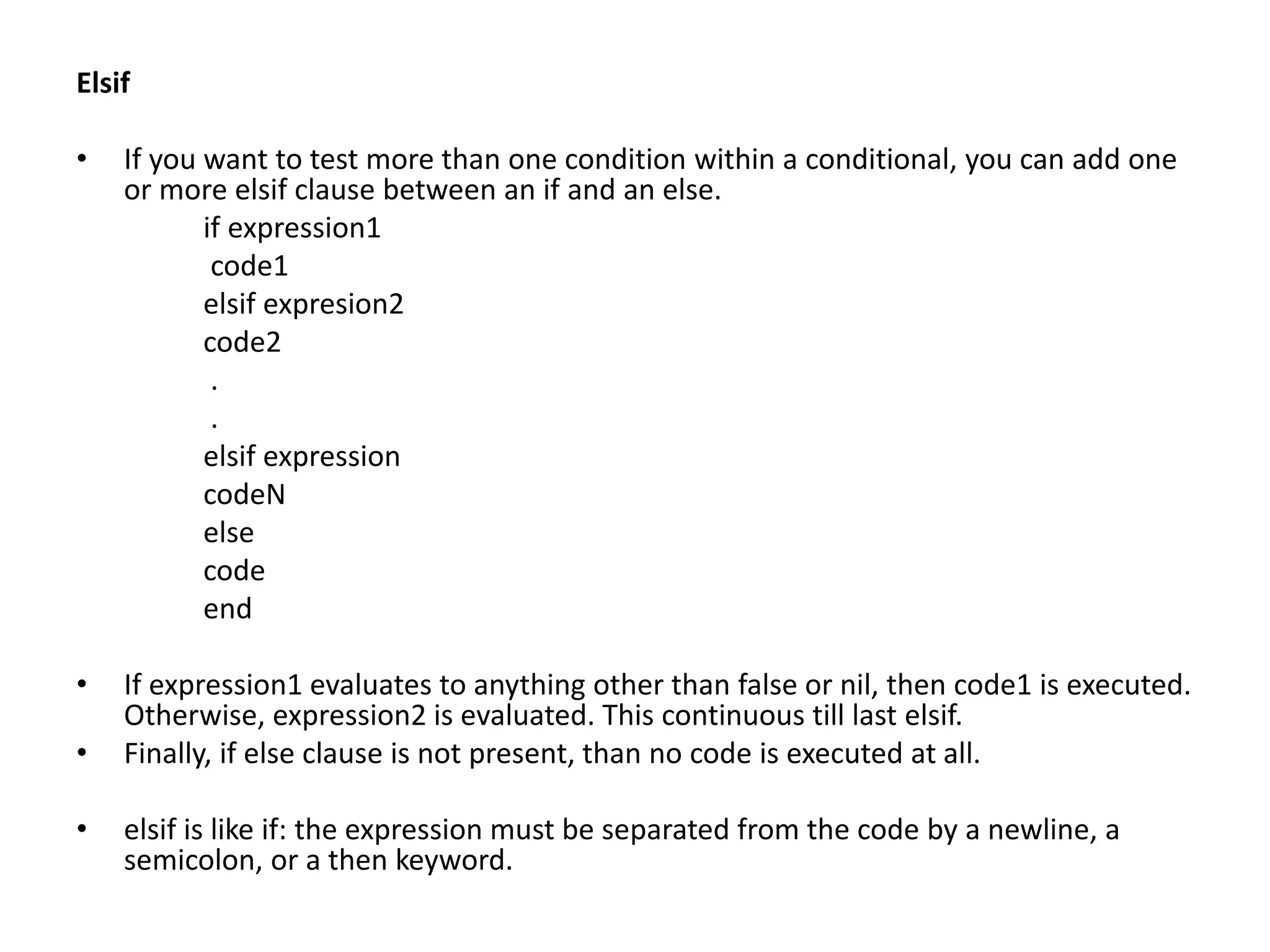

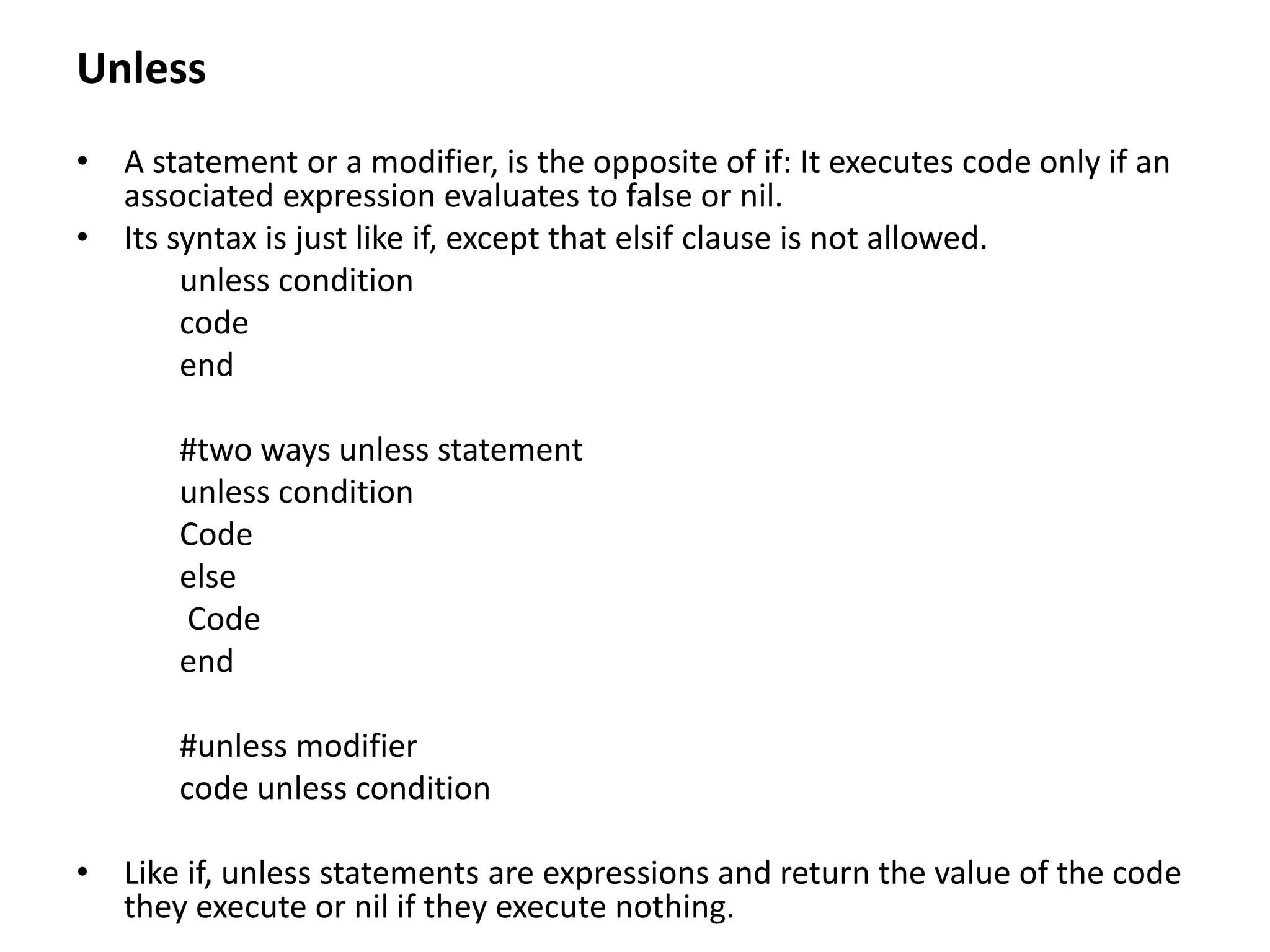

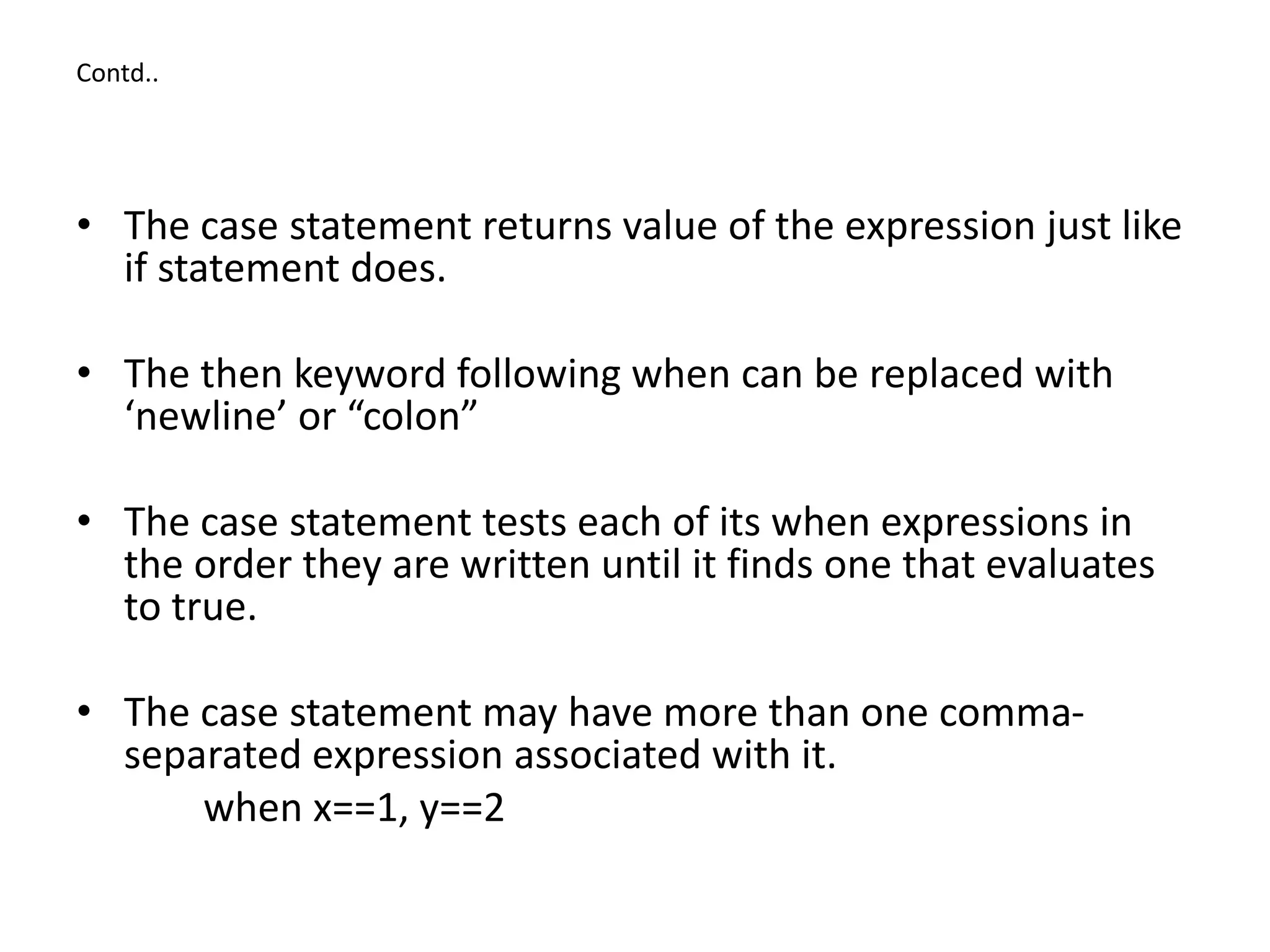
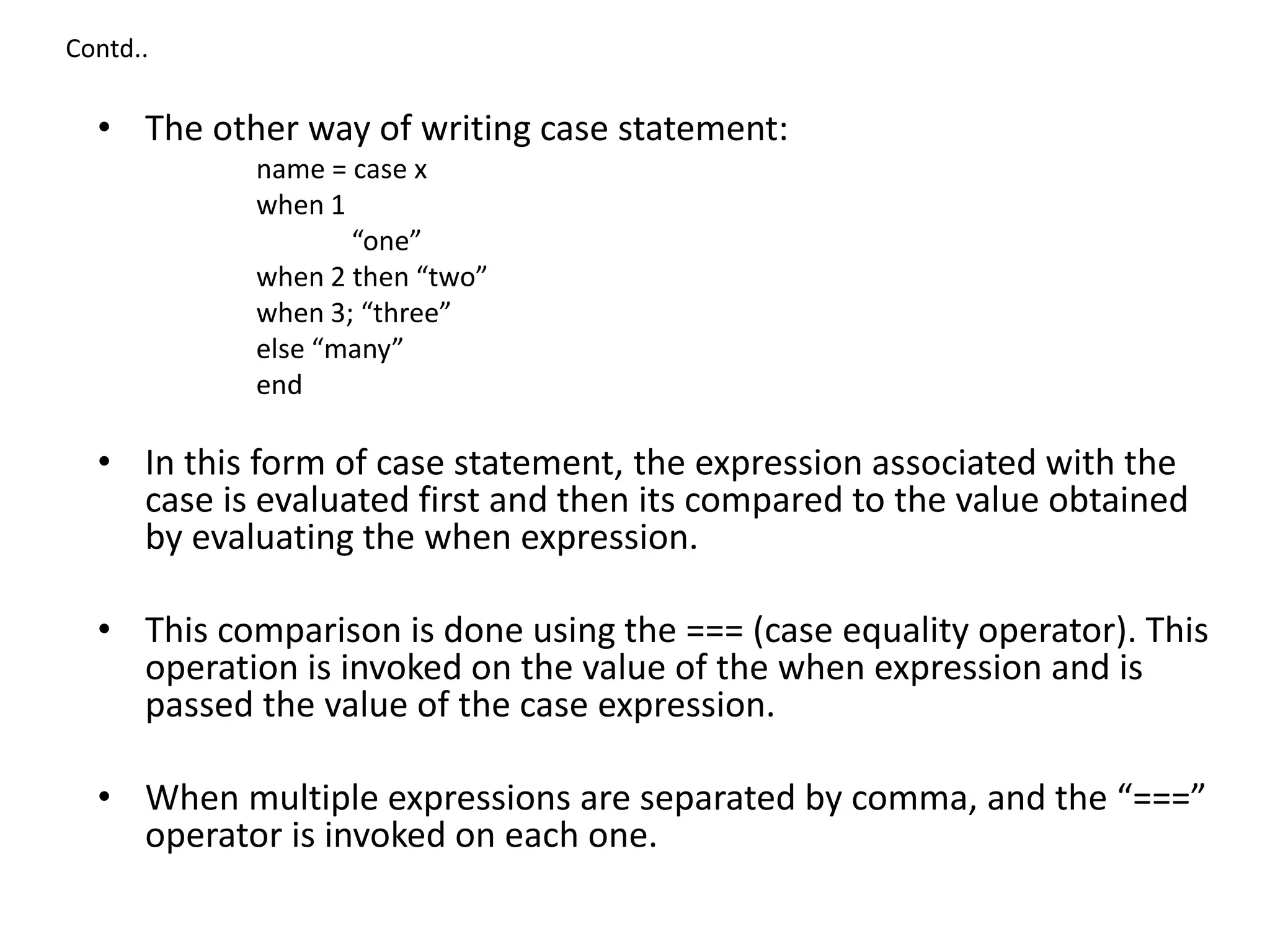
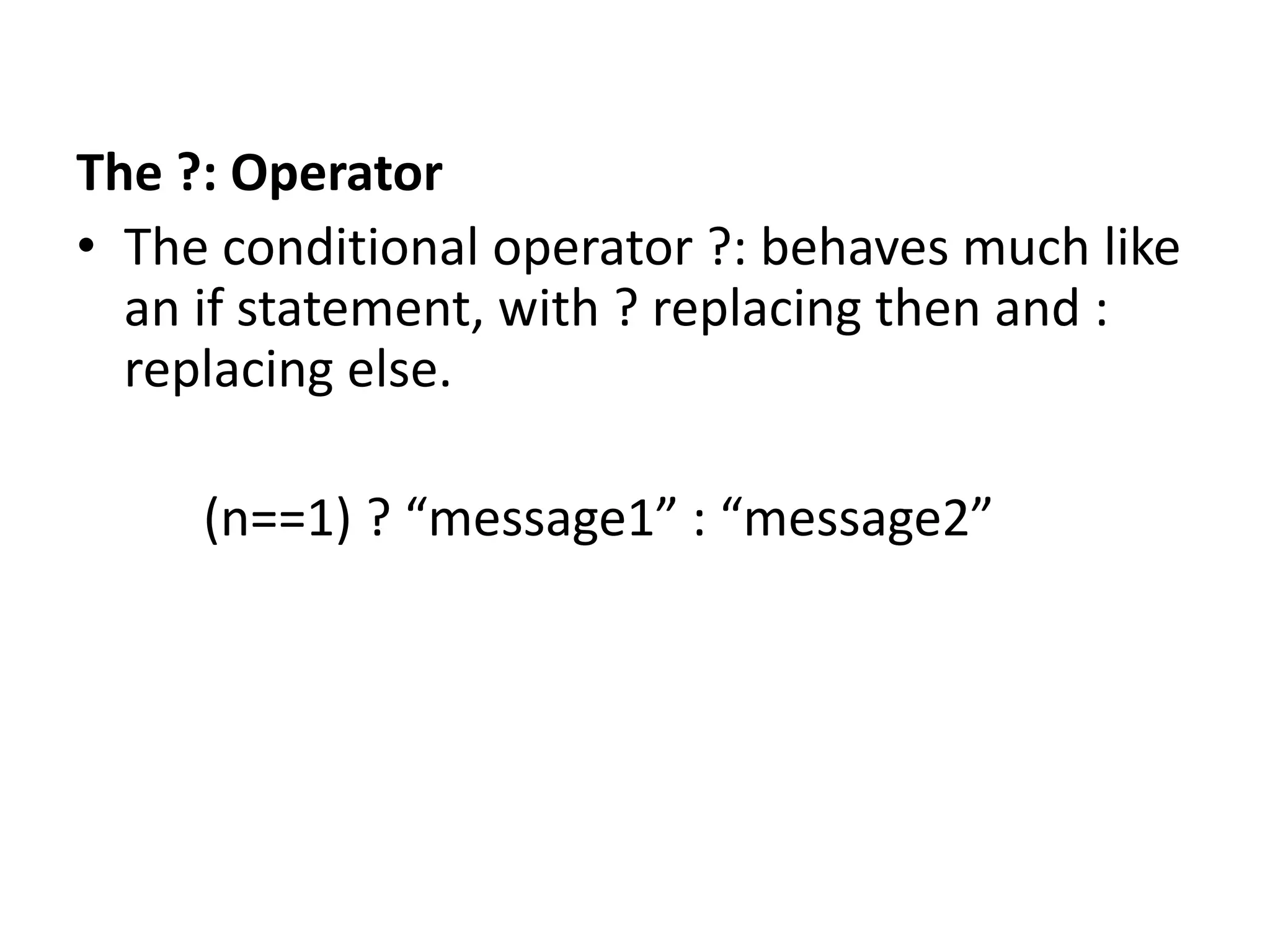
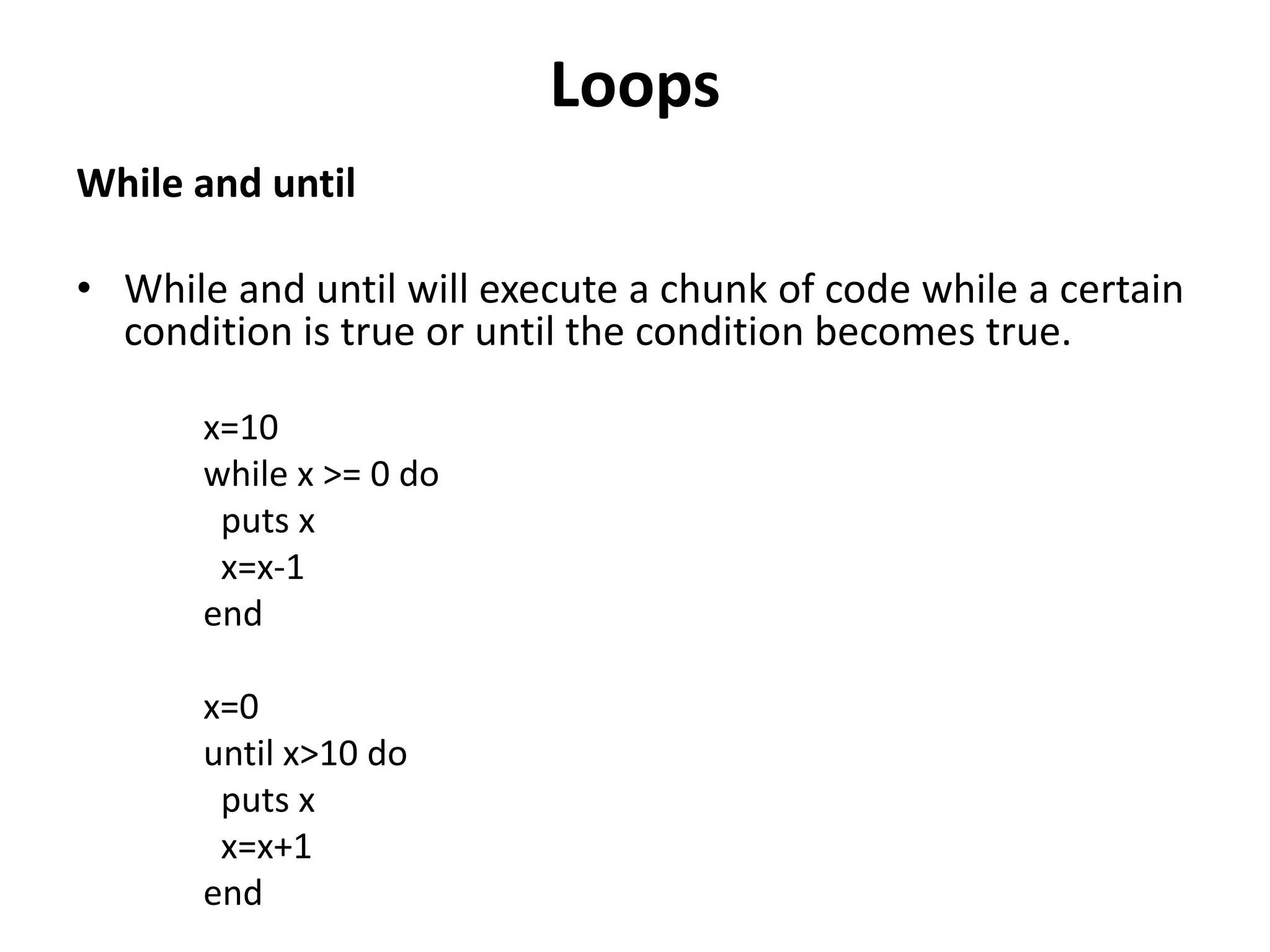

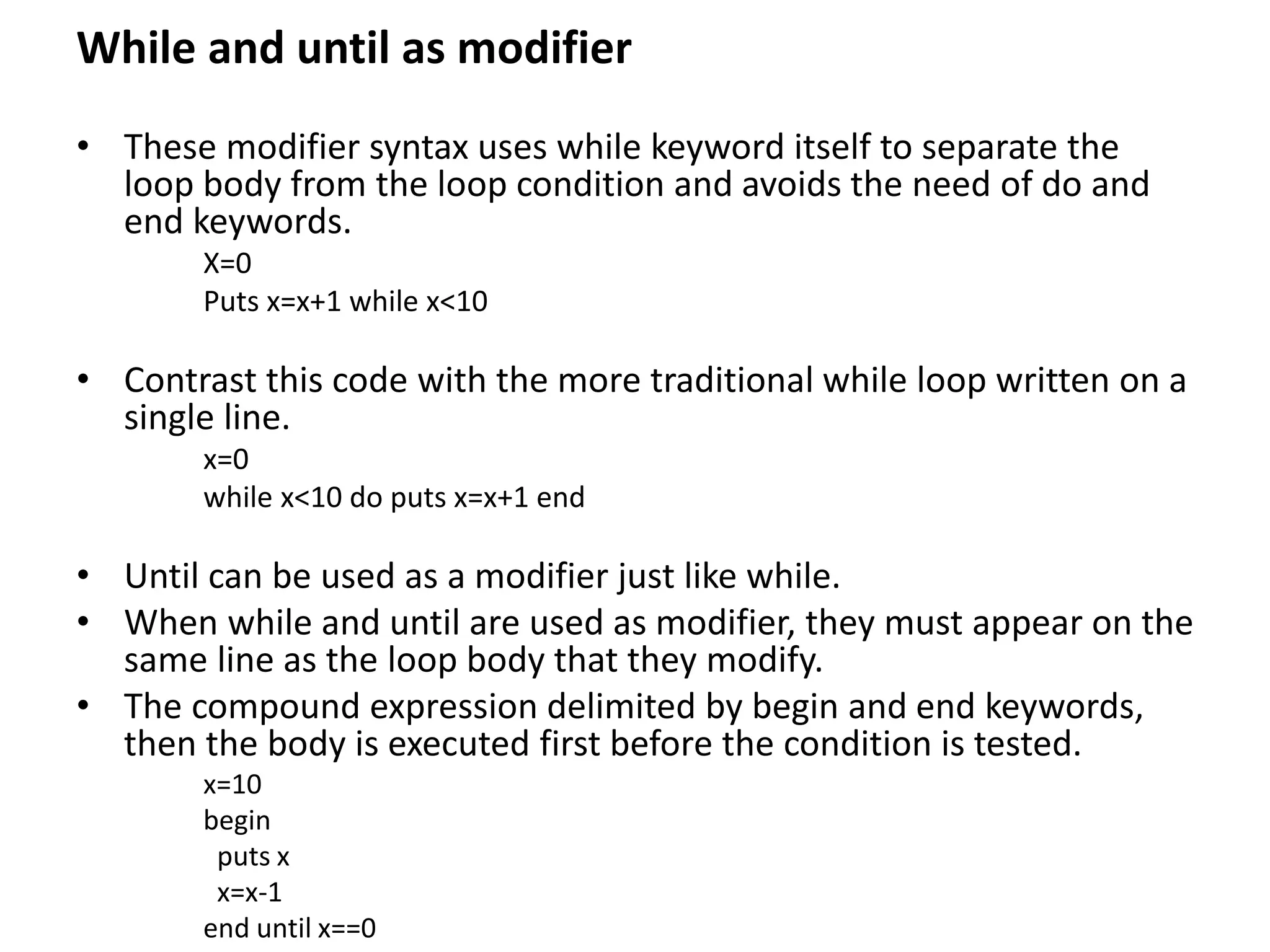

![Contd..
• As the iterator yields the values , the for loop assigns each value to
the specified variable and then executes the code in body.
array = [1,2,3,4]
for element in array
puts element
end
hash = {:a=>1, :b=>2, :c=>3}
for key,value in hash
puts “#{key} => #{value}”
End
• Similarly new variables defined in loop body continue to exists after
the loop exits.
• The values of the hash & array can be iterated using each iteratore
array.each do |v|
puts v
end](https://image.slidesharecdn.com/5-statementsandcontrolstructures-200815125748/75/5-Statements-and-Control-Structures-18-2048.jpg)
![Iterators and Enumerable objects
• Its common in ruby to write loops using special methods
known as iterators.iterators.
3.times {puts “Thank you”}
data.each {|x| puts x}
[1,2,3].map {|x| x*x}
• The times, each, map and upto methods are all iterators and
they interact with the block of code that follows them.
• The complex control structure behind this is yield.
• The yield statement temporarily returns control from the
interator method to method that invoked the iterator.](https://image.slidesharecdn.com/5-statementsandcontrolstructures-200815125748/75/5-Statements-and-Control-Structures-19-2048.jpg)

![Enumerable Iterators
• Array, Hash, Range and a number of other classes define an
each iterator that passes each element of the collection to
associated block.
• This is perhaps most commonly used iterator in Ruby.
[1,2,3].each {|x| print x}
• Ruby’s IO class defines an each iterator that yields lines of
text read from the Input/Output object.
• Most classes define an each method also include the
Enumerable module. The other iterator is each_with_index.
• Some of the most commonly used Enumerable iterators are
collect, select, reject, and inject.](https://image.slidesharecdn.com/5-statementsandcontrolstructures-200815125748/75/5-Statements-and-Control-Structures-21-2048.jpg)
![Contd..
• The collect method executes its associated block for each element of the
enumerable object and collects the return values of the block to an array.
[1,2,3].collect{|x| x*x} #=> [1,4,9]
• The select method invokes the block for each element in an enumerable
object and returns an array of elements for which the block returns a
value other than false or nil.
(0..10).select{|x| x%2 == 0} #=> [2,4,6,8,10]
• The reject method is simply opposite of select.
(0..10).reject{|x| x%2==0} #=> [1,3,5,7,9]
• The inject method invokes the associated block with two arguments. The
first argument is accumulated value of some sort form previous iterations.
The second argument is the next element of the enumerable object. The
return value of the block will be the first block argument for the next
iteration or becomes the return value of the iterator after the last
iteration.
data = [2,5,3,4]
sum = data.inject{|sum, x| sum+x} # => 14](https://image.slidesharecdn.com/5-statementsandcontrolstructures-200815125748/75/5-Statements-and-Control-Structures-22-2048.jpg)
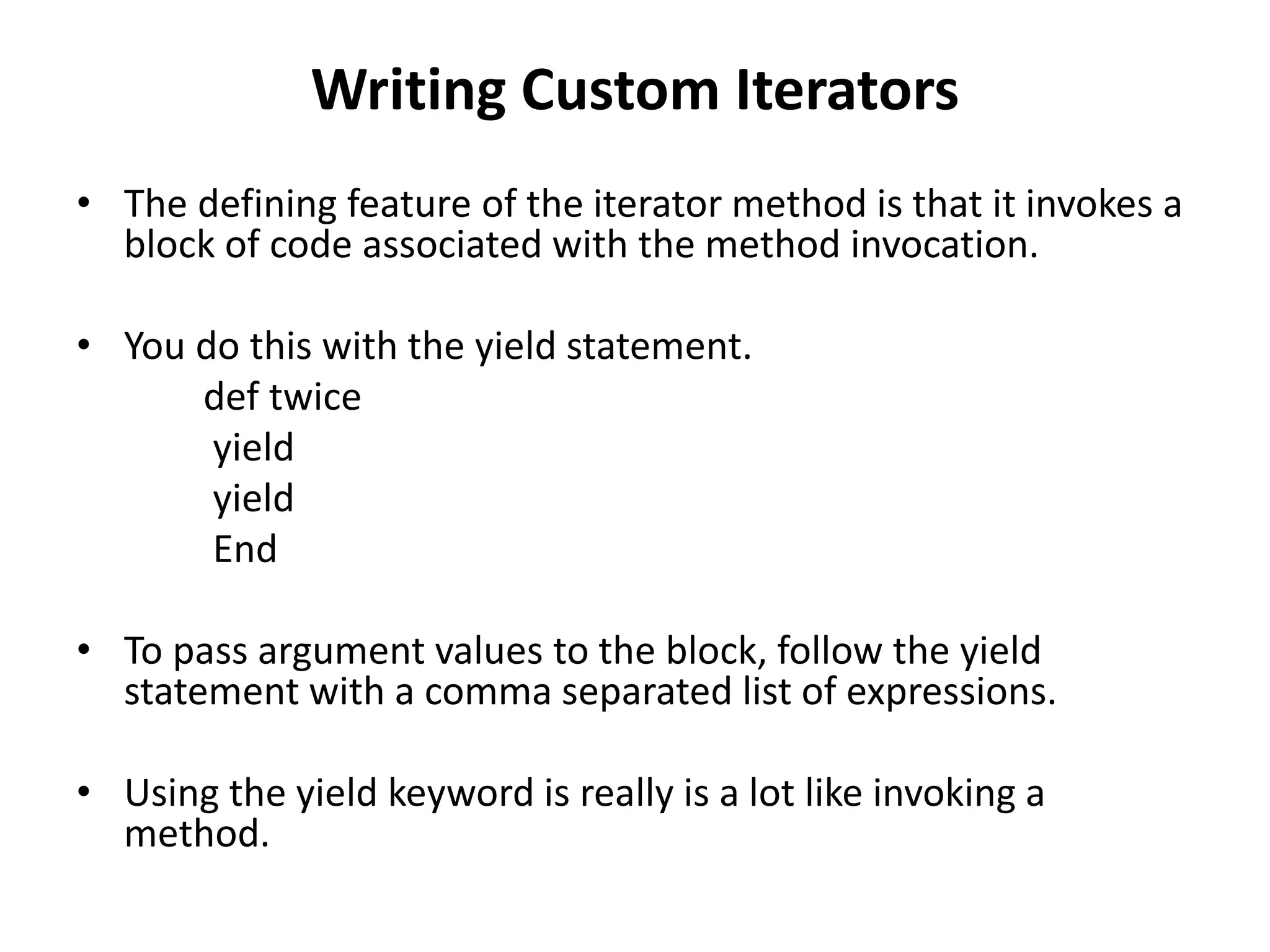
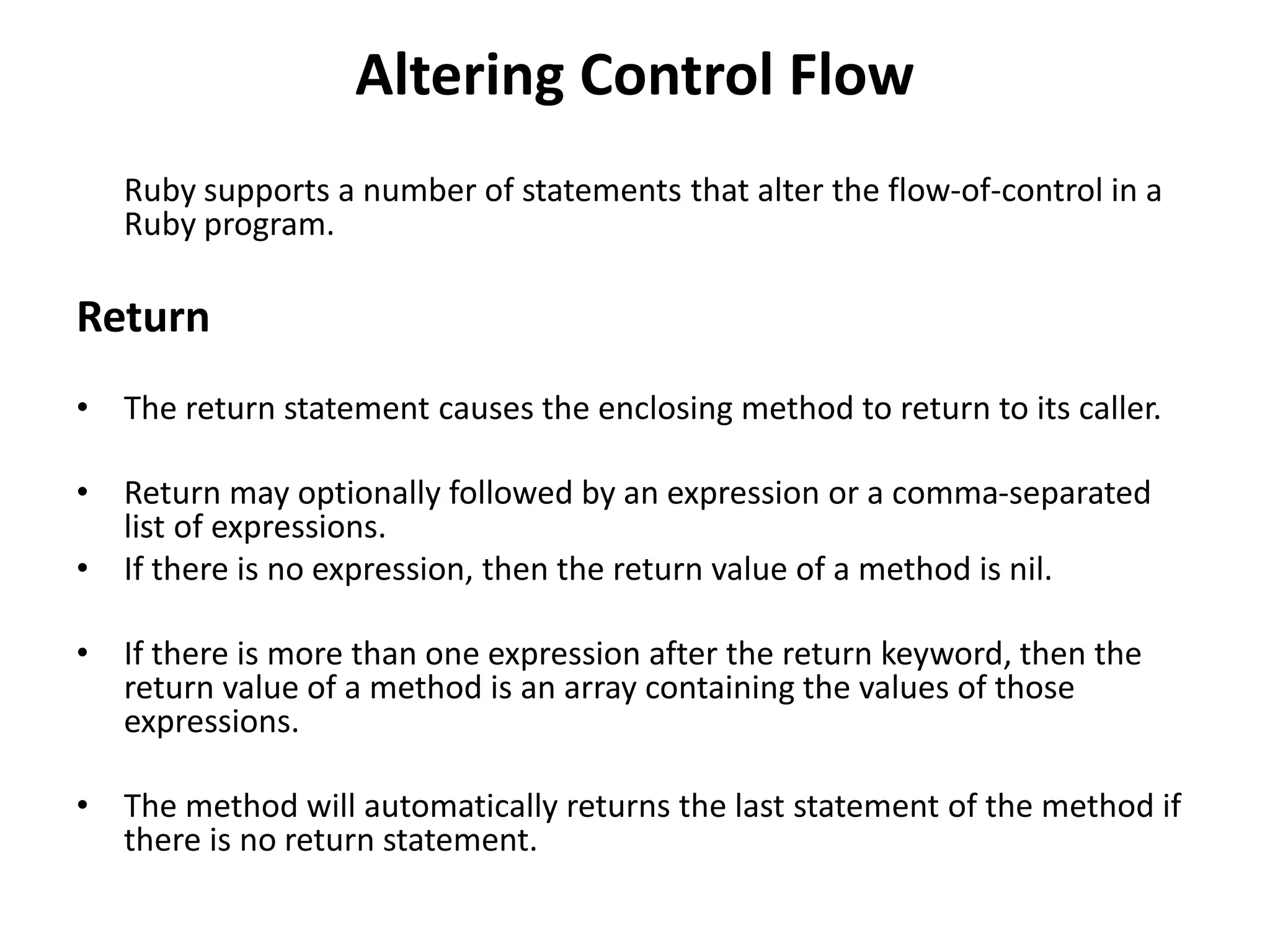
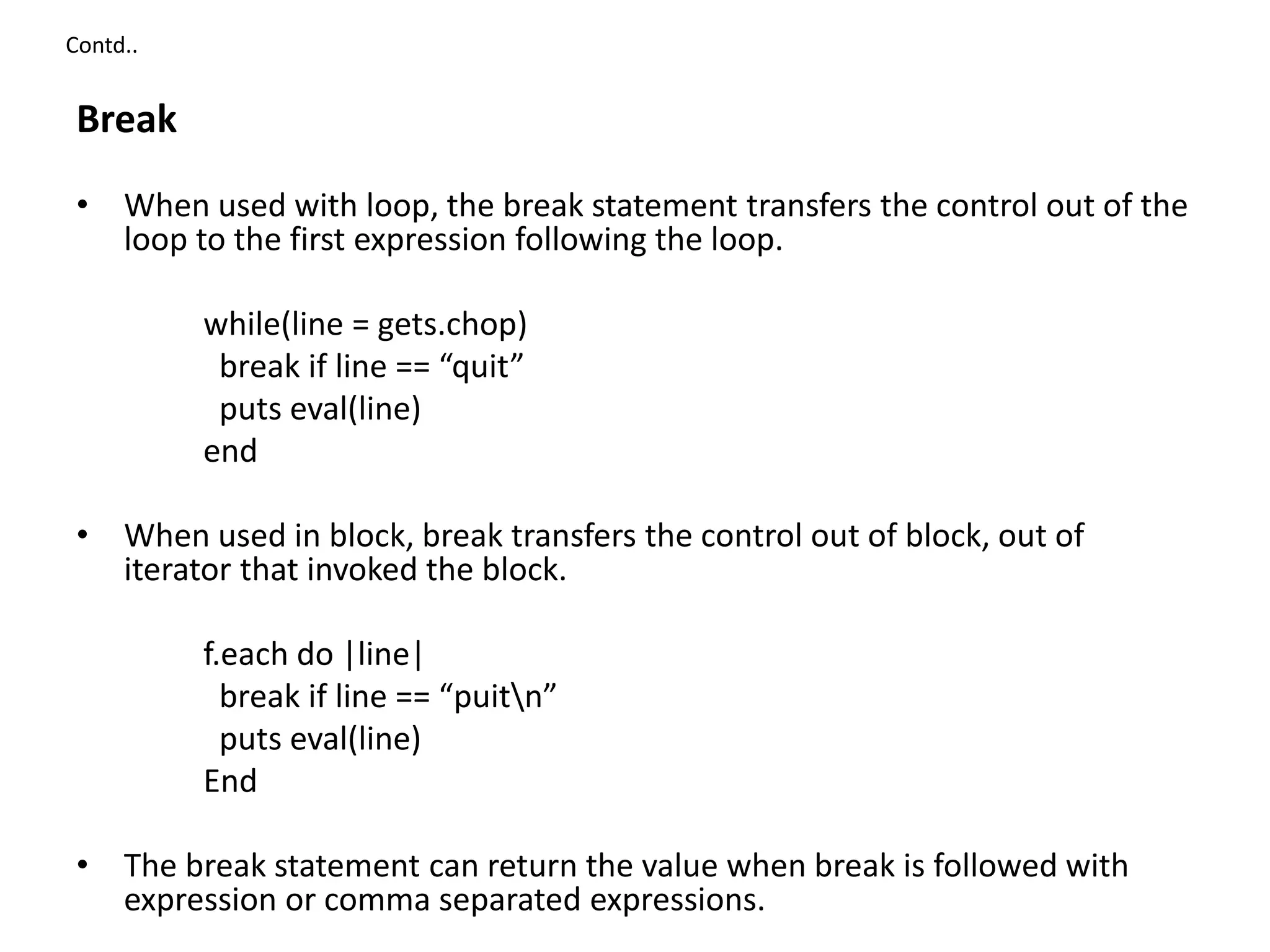
![Contd..
Next
• The next statement causes a loop or iterator to end the current
iteration and begin the next.
while(line = gets.chop)
next if line[0,1] == “#”
puts eval(line)
End
• The next may be used alone or it may be followed by an expression
or a comma separated list of expressions. In loops the expressions
following next are ignored.
• In block, the expression or expressions become the “return value”
of the yield statement that invoked the block.](https://image.slidesharecdn.com/5-statementsandcontrolstructures-200815125748/75/5-Statements-and-Control-Structures-26-2048.jpg)
